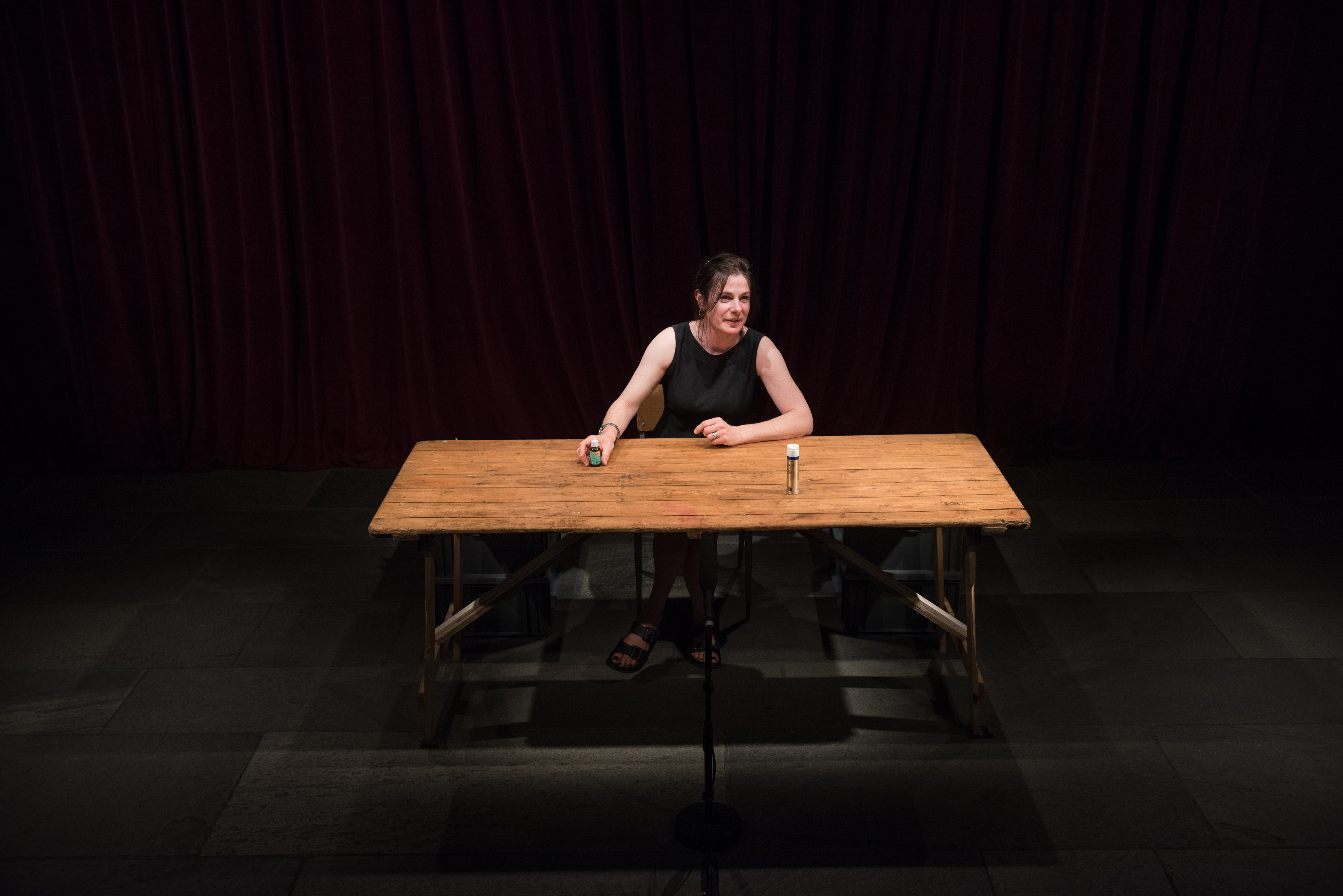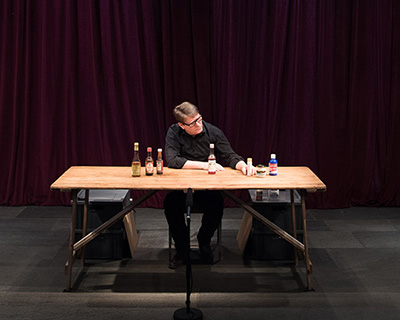In the 36 discrete 45-60 minute-long performances that comprise the complete version of the project, Forced Entertainment performers — Robin Arthur, Claire Marshall, Cathy Naden, Terry O’Connor and Richard Lowdon, joined by regular collaborator Jerry Killick — take turns enacting or summarising the stories of the plays using a large collection of everyday objects arranged on a modest tabletop.
Drawing on research I did during an RSC MyShakespeare commission a couple of years back, the schematic narrations of Complete Works are about proximity and overview. The intimacy of the auditorium, seating people close to the table that serves as its stage, finds a close mirror in the camera shot presenting the action to online audiences when we have sometimes live-streamed the work. The banal platform of the table-become-stage is at once the how-to space of so many Internet tutorials and how-to videos and at the same time, a distant cousin to the ‘wooden O’ invoked by Shakespeare in Henry V as the arena for the audience’s collective imagination. Indeed, Shakespeare is full of such references to the alchemical transposition of language to images, explicit invitations that spectators work to conjure action as described from the stage. It’s a device that, in one form or another, has been a part of Forced Entertainment’s performances since a long time, most centrally perhaps in Dirty Work (1998), a stage production in which pretty much everything that ‘happens’ does so through description and a process of linguistic unpacking. For Complete Works — our episodic Shakespearean marathon — this game of decoding language is set in motion hand in hand with a kind of lo-fi puppetry and diagrammatic deadpan, playing the tabletop as stage, making stand-ins for the characters and actors with a set of unlikely domestic objects.
Watching Richard Lowdon in rehearsal for The Tempest, with a flower pot for Caliban and a bottle of soy sauce for Trinculo, summoned for me the idea of some last-minute-kitchen-table-bank-heist planning session gone wrong; the shipwrecked mariners here, Prospero and Miranda there, the getaway car long forgotten. Claire Marshall’s All’s Well That Ends Well meanwhile cast a bottle of Nina Ricci Perfume as the King of France and a large size Discount Pharmacy Nail Polish Remover as Bertram, Claire seated at the elaborately laid out table, resembling a storybook child acting plays with whatever’s to hand, confined to a bathroom, cupboard or attic on some toyless rainy afternoon.
In one sense, the inscrutable objects give nothing, amplifying to absurdity some of Bresson’s maxims about the ideal of blankness when it comes to acting and images in cinema. But the project does somehow manage to get blood from the stones. The unpromising machinery of the tabletop stirs something deep, through which the stories gain a kind of traction; in time you find yourself watching the box of matches for a trace of a protaonist’s guilt, staring at the large bottle of wood glue for signs of a supporting character’s dilemma, or wondering about the fate and motives of an allspice jar. On the one hand, it’s a kind of rudimentary ventriloquism, bringing life and voice to these supposedly dead things, but on another, the work taps the half-life that objects have anyway, their speechless speech, the traces of their action and purpose, their haunted existence. Even these inanimate performers – coming from the kitchen cupboard, the grocery store, the garage, the junk shop and the supermarket — bring something to their roles.
Amongst the most interesting moments in these versions of Shakespeare are those where the plays, on their own terms, stage questions about personhood and agency, fate and free will, life and death. Watching the objects arranged on the table for the end of King Lear, gathered around the body of Cordelia (as played by a small glass vial), Robin Arthur’s glass vase representing Lear looking down to see if his daughter is still breathing; or watching Terry O’Connor’s Richard II pontificate and philosophise endlessly, you’re confronted in a double sense by the lifelessness of Cordelia, by the inertness of the king. It’s the search for a speculative interiority that’s compelling and baffling at the same time – the conundrum that’s at the heart of puppetry, and perhaps, at the heart of acting itself.
A version of this article was published in “Exeunt Magazine” 2nd July 2015.

